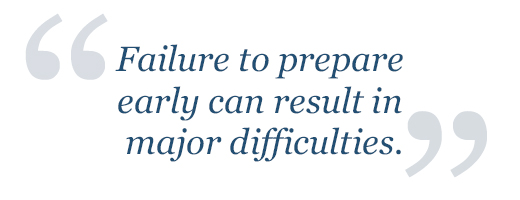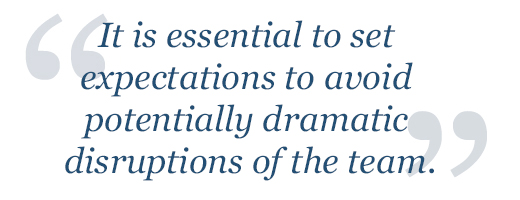Data do not speak for themselves. To succeed at an Advisory Committee meeting, a drug development team must bring its data to life. The team must come across as capable, credible, and compelling as it performs two critical functions:
• Present a clear, data-supported argument affirming efficacy and safety claims, and
• Respond effectively to questions, addressing the Committee's concerns.
Success requires well-planned, practiced, and precise delivery of strategically focused messages by strong and skilled communicators.
Message Management Focuses the Entire Effort
The development of the communication strategy for the Advisory presentation should occur as early as possible.
This strategy then guides the development of the messages, the Advisory Committee Briefing Document, and the presentation to the Committee. Small adjustments may be necessary later, as more data become available or as the FDA Reviewer sends questions to the sponsor.
The entire team needs to know the communication strategy to enable everyone on the project to work together seamlessly.
Failure to prepare early can result in major difficulties. For example, inconsistencies between the Briefing Document and the strategic intent of the Advisory presentation can confuse the Committee and reduce the chances for approval.
Effective Materials Review Supports the Messages
All data and message representations (visuals, posters, report graphics, etc.) should provide compelling, at-a-glance comprehension, effectively support key messages, and incorporate the most effective designs, colors, and formatting.

Presentation slides should drive the strategic messages while boosting retention for listeners. They must provide enough information without becoming sources of distraction or confusion. Back-up slides for FDA meetings must resolve questions without opening new lines of debate.
All documents, including the ISS, ISE, and Briefing Document, must adhere to the same communication strategy as the presentation.
Rigorous Question & Answer Preparation Can Protect the Team
The best way to prepare for the questions from the Committee is to anticipate as many of them as possible and to drill relentlessly on the responses. This builds both the strategy skills and intellectual agility to control the focus of the Committee.
Role-playing is an effective tool used to flesh out not just a question and answer, but entire lines of questioning that can arise during the meeting.
Perhaps the most important group to the process is the people who will be supporting the responses to questions from the Committee. They will have to be completely synchronized with the speakers so that they can pull up just the right material the speaker needs to respond to a question.
The team must be able to pull up the right slides within very tight time frames, sometimes even guiding the speaker through the response. Whether it is for the lead presenter or a supporting team member, the retrieval process should occur within 10-15 seconds of the end of the question.
That takes special techniques and rigorous drilling, but it is well worth it because it gives confidence to the Committee.
Rehearsals & Mock Panels Drive Multiple Goals
While formal rehearsal and Mock Panels are an essential element of speaker preparation, they also serve other goals.
They can create opportunities for internal and external experts to provide input on content. These experts can also be sources of questions that probe the structure of the presentation, enabling further testing and refinement of the messages.
Most importantly, the questions will prepare the team for the questions they will face from the Advisors. At the same time, Mocks can serve as important milestones for senior management and development partners.
It is essential to set, manage, and meet expectations to avoid potentially dramatic disruptions of the team.
Every Team Must Find A Unique Best Path To Success For Every Submission
A team can follow one of any number of paths to prepare for an Advisory Committee meeting.
Some teams lock into past steps because of one or two prior successes. Unfortunately, this can be a dangerous trap because each meeting is unique as is every team.

It's critical to find the right path that will be the most direct, effective, and efficient preparatory process that will raise the chances for success by putting the specific application and the particular team into the best possible light.
The overall preparation process can be long and tense, requiring tremendous effort, focus, and patience. Each team facing this task must follow a path compatible with the mechanical aspects of building slides and drilling.
At the same time, the process must respect the scientific work and the humanity of the people involved, effectively engaging all of the people on the team, enabling them to achieve their best, both scientifically and personally.





